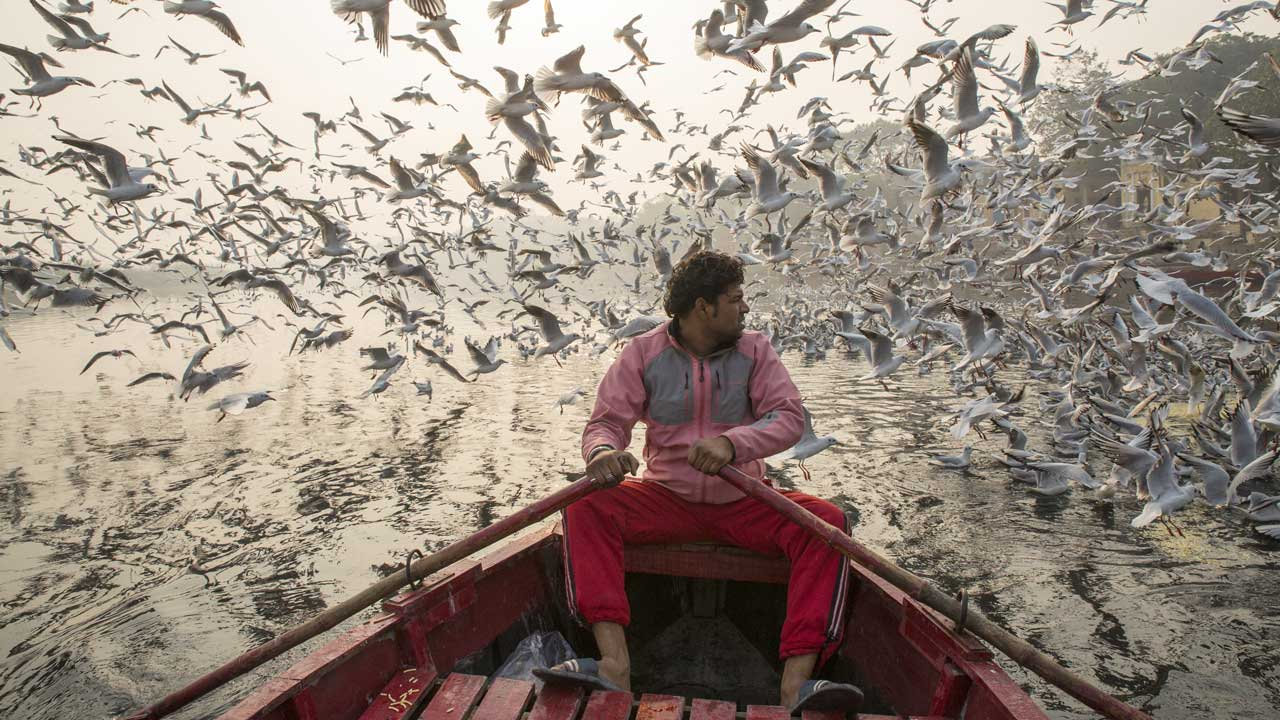
Enviro
10:53, 08-Jan-2019
Delhi sees decline in migratory birds due to air pollution
Updated
10:42, 11-Jan-2019
By Kshitij Nagar

Walking along the banks of Delhi's Yamuna river on a smoggy winter morning, photographer Anubhav Sharma stops to click a photo of a black-necked stork. It is one of the few that he has seen this year. "I remember seeing thousands of them on the Yamuna wetlands when I was a kid. Now you only see a few hundred at a time, if you are lucky."
This is a growing phenomenon that made birdwatchers and environmentalists in the city concerned. Every winter, birds from northern India make their way through Delhi, down to wetlands in Indian plains, to evade the country's chilling winter. However, birdwatchers say their numbers are dwindling.
In December, Navin Gupta, an environmentalist, conducted a survey of the migratory birds passing through Delhi. This included the banks of the river Yamuna and bird sanctuaries in the Sultanpur and Okhla regions of the city. "We were able to spot around 270 different species of migratory birds. This is still better than last year where we spotted only 245 or so species but if you look at the data from the past five years, there is a steady decline."

CGTN Photo
CGTN Photo
Experts believe the city's air pollution may be to blame. "We have been conducting periodic surveys over the last few years and we find a direct correlation between pollution and the decline in the visible population of birds," added Gupta.
Migratory birds pass through the city from November through to the second week of January. Gupta and his team said they observed a drop in numbers of birds being sighted in December over the past three years. This is the time when the air in the city is at its worst.
Delhi's air is considered to be the most polluted in the world with levels of common pollutants such as carbon monoxide, ozone and sulfur monoxide far exceeding the prescriptive norm. Levels of other pollutants, such as fine carbon particles commonly called PM 2.5 remain high in Delhi's air throughout the year and can be as high as six times the World Health Organization limit during the winter months.

CGTN Photo
CGTN Photo
Vehicular pollution, construction dust and smoke from farmers burning crop stubble are considered to be some of the leading factors of air pollution in the growing city – along with firecracker displays during the Hindu festival of Diwali.
The country's green court, the National Green Tribunal, has often come down hard on the state's government for not being able to curb pollution that endangers the lives of its citizens.
There are also concerns that the city's rapid urbanization could contribute to the fall in bird numbers. Recently, activists fought hard to stop a private developer from taking over land that they considered ecologically important on the Yamuna river's floodplain.

CGTN Photo
CGTN Photo
Gupta is concerned about the situation flying out of control. "We must now act. If we don't, then we risk doing irreparable damage to flora and fauna of the city. We cannot have development at the cost of the environment," he said.
With the population of these birds waning, photographer Anubhav Sharma said he has found new meaning to his work. "Earlier I photographed birds, just because I was fascinated by them, now I do it to build an archive and evidence of the world that we are in. These birds may not come back here next winter, but at least they can find a home in my images."

SITEMAP
Copyright © 2018 CGTN. Beijing ICP prepared NO.16065310-3
Copyright © 2018 CGTN. Beijing ICP prepared NO.16065310-3